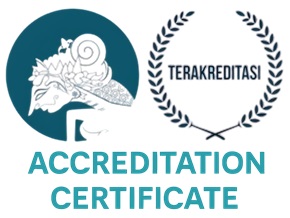Designing An Educational Game To Recognize Human Body Organs And The Functions For V-Grade Children Of Sdn 18 In South Bengkulu Using Construct 2
Abstract
Education is a very important thing for the progress of a nation. Success in the field of education will give birth to superior and competitive human resources. The learning process is an effort that can improve the quality of human resources that we can get at school. But there are still many schools today which in their learning process are still conventional or still use books. The learning process like this has many drawbacks, one of which is that students will get bored easily and find it difficult to understand the material. In the current era of advanced technology, there are many technologies that can be used as media in the learning process to replace the role of books, one of which is games. By using educational games as learning media for the introduction of human organs, the learning process will be more interesting and interactive. This research uses the Multimedia Development Life Cycle (MDLC) method in the process of making this game. With games as a learning medium, students will not get bored easily because they can learn while playing. Based on the results of the questionnaire from 16 respondents, the feasibility level of the game was 76.56% or in the acceptable category. Based on the tests conducted, it can be concluded that this educational game can help students at SDN 18 of South Bengkulu learn about human organs in a more enjoyable way.
Downloads
Copyright (c) 2023 Rahma Safitrah, Siswanto Siswanto, Rizka Tri Alinse

This work is licensed under a Creative Commons Attribution-ShareAlike 4.0 International License.






.png)

